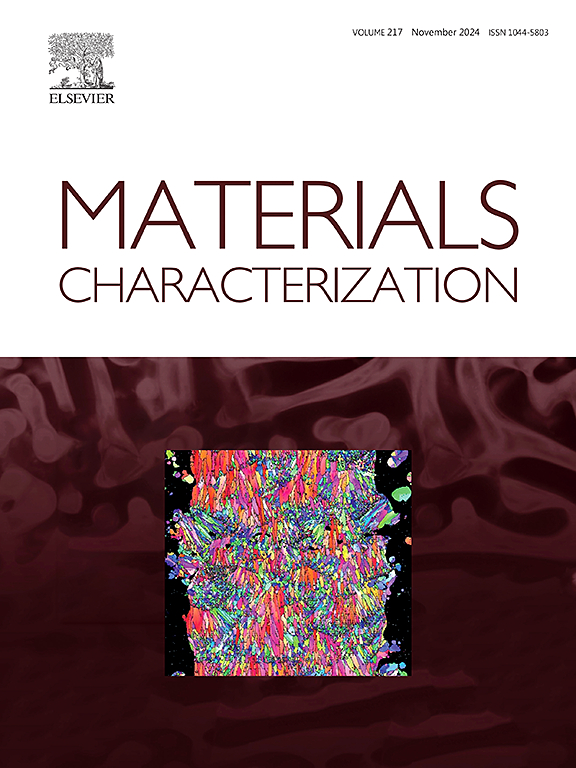Identification and accurate characterisation of the metastable CoFCC phase in WC–Co cemented carbides
IF 4.8
2区 材料科学
Q1 MATERIALS SCIENCE, CHARACTERIZATION & TESTING
引用次数: 0
Abstract
Composed of hard tungsten carbide (WC) particles and a soft cobalt (Co) matrix, WC–Co cemented carbides exhibit significant differences in the material removal rates of these phases during metallographic preparation. This disparity, combined with the susceptibility of the soft Co phase to deformation-induced martensitic phase transformation from its face-centered cubic (CoFCC) to hexagonal close-packed (CoHCP) structure, poses substantial challenges for microstructural characterisation. The resulting ambiguity complicates the identification of the pristine Co phase and raises concerns about the presence of preparation-induced artefacts. In this study, we present a detailed comparative analysis aimed at minimizing ambiguities in the characterisation of the pristine Co phases in a series of WC–Co cemented carbides. We quantitatively report on the controllability of various preparation parameters under multiple conditions, for plane-polished cross-sections used in (e.g.) EBSD analysis and for thin-sections such as used in (e.g.) TEM analysis. We report on the interplay between material removal and the deformation-induced martensitic CoFCC–CoHCP phase transformation during metallographic preparation, identifying “GO” and “NO GO” regimes for the unequivocal identification of the pristine Co phase in WC–Co cemented carbides. The optimal metallographic preparation method for the “GO” regime involves an Ar+ ion polishing energy density of ∼10 MJ/m2 and a duration of ∼80 min. This work establishes a robust workflow for accurately determining the pristine Co phase, providing a pivotal aspect for the characterisation of microstructure–property relationships in WC–Co cemented carbides.
求助全文
约1分钟内获得全文
求助全文
来源期刊

Materials Characterization
工程技术-材料科学:表征与测试
CiteScore
7.60
自引率
8.50%
发文量
746
审稿时长
36 days
期刊介绍:
Materials Characterization features original articles and state-of-the-art reviews on theoretical and practical aspects of the structure and behaviour of materials.
The Journal focuses on all characterization techniques, including all forms of microscopy (light, electron, acoustic, etc.,) and analysis (especially microanalysis and surface analytical techniques). Developments in both this wide range of techniques and their application to the quantification of the microstructure of materials are essential facets of the Journal.
The Journal provides the Materials Scientist/Engineer with up-to-date information on many types of materials with an underlying theme of explaining the behavior of materials using novel approaches. Materials covered by the journal include:
Metals & Alloys
Ceramics
Nanomaterials
Biomedical materials
Optical materials
Composites
Natural Materials.
 求助内容:
求助内容: 应助结果提醒方式:
应助结果提醒方式:


